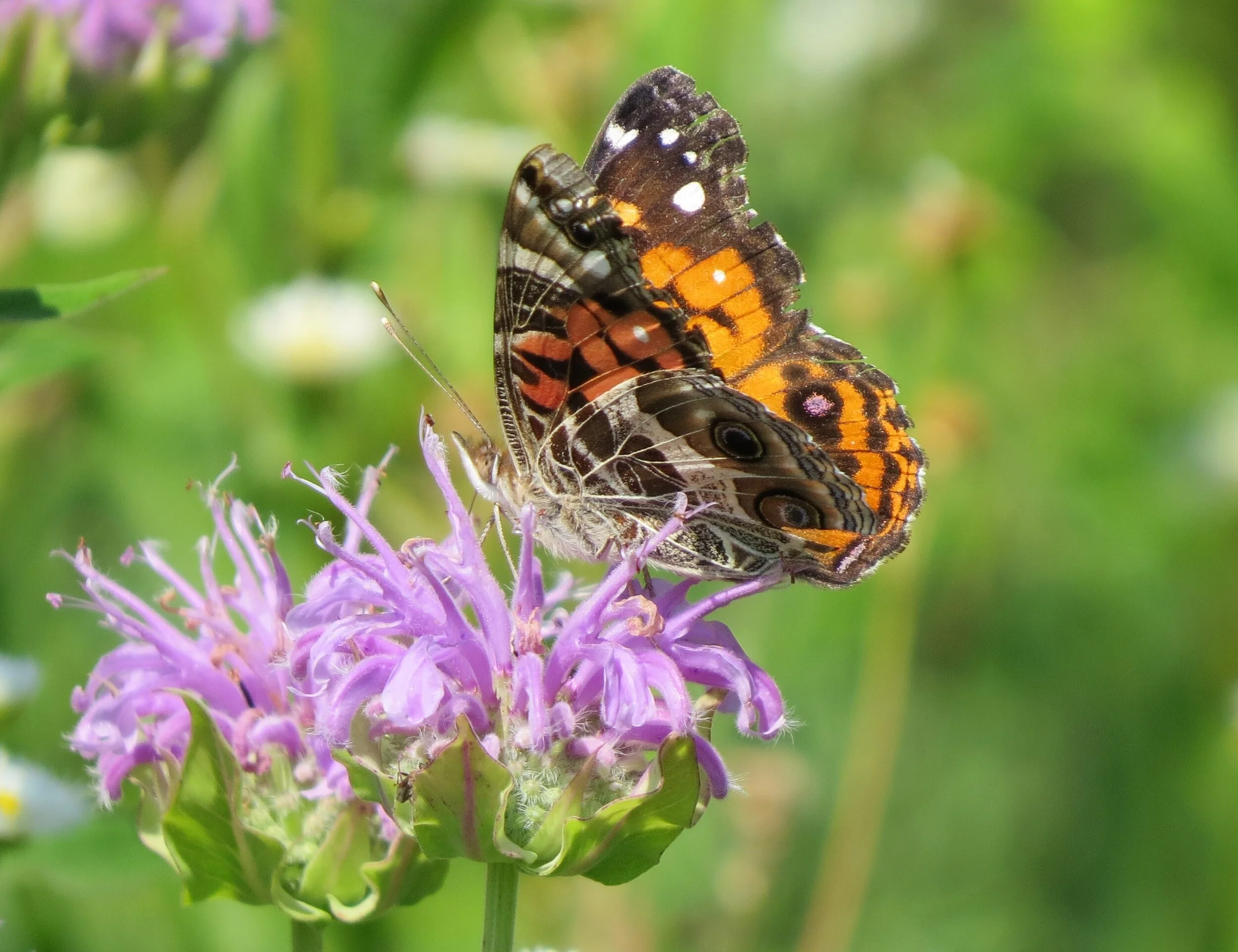On July 2, we held the 33rd Mud Lake Butterfly Count — a great event with a number of records broken and fun memories made. An impressive 41 species of 1,763 individuals were recorded by 22 observers that searched for 27.5 party hours.
Karl and Dorothy Legler began the count in 1989 after learning that Randy Hoffman with the WDNR State Natural Areas Program sighted 50 dogface butterflies that migrated from southern states, at Rocky Run State Natural Area in the drought year of 1988. They set up the Mud Lake Butterfly Count area, that included Rocky Run Fishery Area, Rocky Run Savanna State Natural Area, Mud Lake State Wildlife Area, and Schoeneberg Marsh Waterfowl Production Area. Goose Pond is in the count area but in the 1980’s, the sanctuary contained only 100 acres. Since the count began there have been significant acreage enlargements at all public lands and Goose Pond Sanctuary.
Silvery checkerspot, photo by Robert O'Connell
The highest number of species observed in the county’s history was 45 in July 2016. Overall, 69 species were found in the 33 years. Highlights from this year include two Acadian hairstreaks and a silvery checkerspot that are “modern records” for Columbia County on the Wisconsin Butterfly website. High numbers included 131 black swallowtails, 750 clouded sulphurs, 53 great spangled fritillaries, and 399 monarchs. See the sheet below for numbers by area.
Observations by Karl and Dorothy Legler at Mud Lake State Wildlife Area
Karl and Dorothy hit the butterfly hotspot on the north side of Mud Lake along Tollefson Road that goes for one mile before the dead end. For many years, they found the roadside mowed and few butterflies. This year it was not mowed and “ the roadside was terrific and like it was 32 years ago.” The nearby wetlands contain a large acreage with a diversity of sedges that are the host plants for the “sedge” skippers. After the butterflies leave the sedge meadow, they look for nectar plants. The roadside contained common and swamp milkweeds and many other flowering plants that concentrated the nectaring butterflies. Many butterflies nectar on milkweeds while only the monarch lays eggs on the milkweeds.
Milkweeds are great plants for a variety of pollinators! Photo by Joshua Mayer
Goose Pond Sanctuary Observations
Seventeen staff, interns, and volunteers assisted at Goose Pond and searched 13.5 party hours. We began first with an introduction to the butterflies we hoped to find and then divided into five groups. We found 20 species, a high in our eight years of conducting July counts, and 1,257 individuals. The count at Goose Pond provides a good overview of species that benefit from our restored prairies. High numbers included 130 black swallowtails, 626 clouded sulphurs, and 302 monarchs. The highlight was when Caleb Lang, Rob O'Connell, and Kyle Hulbert found and photographed a silvery checkerspot (a modern record for Columbia County). Everyone enjoyed searching for butterflies and viewing the gorgeous restored prairies.
Black swallowtail by Andy Reago & Chrissy McClarren
Jim Otto’s Observations at Schoeneberg Marsh Waterfowl Production Area
At 8:45 a.m. Jim met Karl and Dorothy Legler, Fred Dike, and Douglas Buege at the Hwy 22 parking lot of the Rocky Run State Fishery Area. This is the traditional starting point for the Mud Lake Butterfly Count. Those that arrived early had already begun counting butterflies near the parking area: Delaware skippers, monarchs, common wood nymphs, …. Once we were all present and geared up (with close-focusing binoculars, cameras, note pads, water bottle, etc.), and had applied sunscreen, we began slowly hiking to the west.
It was a sunny day, so the butterflies were out. We counted as a group for a while, then Doug and Fred headed off on their own to other promising areas in the fifteen-mile diameter count circle that covers 177 square miles!
Our remaining trio soon reached a patch of bee balm/bergamot in full bloom. Here we found a nice mix of butterflies. Jim spotted a “lady” butterfly, and quickly snapped a photo. Which species of “lady” butterfly was it? A quick check of the photo showed that it had two eye spots on the underside of the hind wing, indicating that it was an American lady. (The painted lady has four eye spots.) He then found a very dark grass skipper that he couldn’t identify. Karl and Dorothy stepped in to identify it as a little glassywing, an uncommon species here in Columbia County.
Glassywing photo by Jim Otto
Jim’s special assignment for the day was to count at the Schoeneberg Marsh Waterfowl Production Area that is adjacent to Madison Audubon’s Erstad Prairie, so he said farewell to the Leglers and returned to my car. At Schoeneberg Marsh, he spent 2.25 hours covering about 2.5 miles on foot. This is a beautiful area, with a variety of wetland, oak savanna, restored prairie and old field habitat. He found most of the species that he had hoped to find. “I found nine banded hairstreaks in areas with oaks, five viceroys here and there, but I whiffed on bronze coppers,” Jim said. Fortunately, someone else found that species elsewhere in the count circle.
His favorite find at Schoeneberg Marsh was an Acadian hairstreak, a species that had not yet been reported in Columbia County, according to Mike Reese’s “Wisconsin Butterflies” website! He found one nectaring on common milkweed. It was a great day!
Acadian hairstreak, photo by Jim Otto
Thanks to the Leglers for coordinating the count and to everyone that helped out. We hope you get out this summer to enjoy the butterflies. Let us know if you would like to help and have a “great day” on July 1, 2022. There is plenty of habitat to search.
Written by Mark Martin and Susan Foote-Martin, Goose Pond Sanctuary resident managers; Graham Steinhauer, land steward; and Jim Otto, volunteer
Cover photo by Jim Otto









